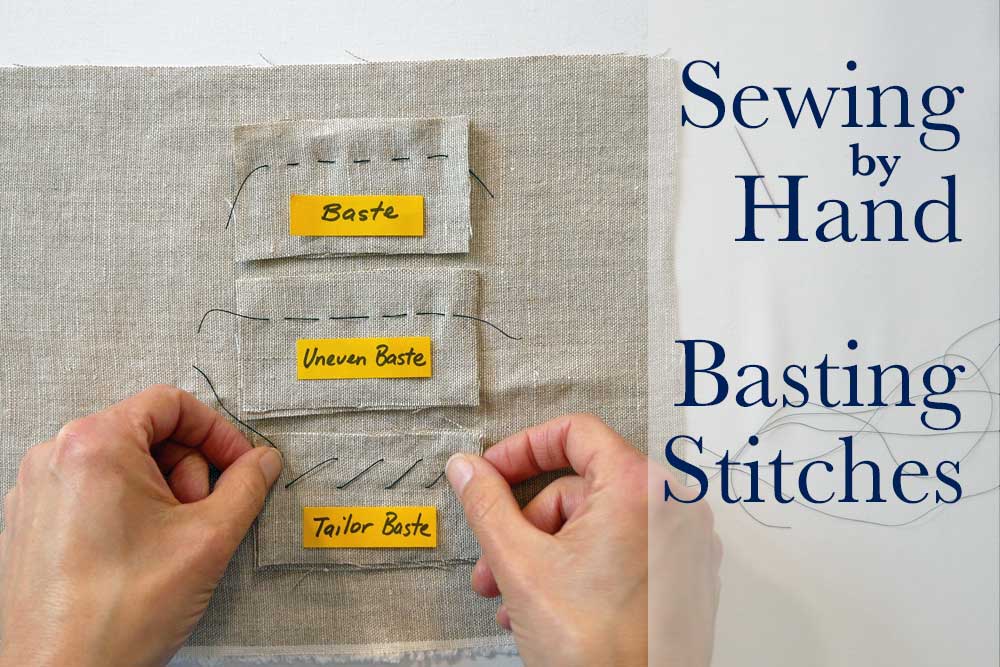
Sometimes you need some help. And sometimes you just need some temporary help. Help to hold things together until they get the final approval (fitting). Or help to hold things together perfectly lined up (underlining). Or just an extra hand to hold things together without using every pin in your pincushion.
The basting stitch is your help. It’s a great help and I’m sure you’ve basted with your sewing machine but hand basting has its’ uses too.
In this video you’ll see how to sew in three different types of basting stitches, each suited for a different purpose but all thee easy to stitch.
Some General Guidelines for All Basting:
- Because basting stitches are temporary a knot in your thread can be replaced by one or two tiny stitches at the beginning and end of your sewing.
- Use a contrasting color thread. It’s easier to see and therefore to remove completely.
- Don’t use red thread. As you remove the thread it will shed its’ fibers on and into the weave of your garment fabric. Red thread fibers just stand out too much on light fabrics.
- Never press your basting stitches. If you must, like the basting stitches holding down pleats, or on a wool lapel, use silk thread. An all-purpose thread will leave an imprint. (It’s slight but if you’re sewing something very special on special (pricey) fabric, don’t risk it)
The Close-Ups and Details
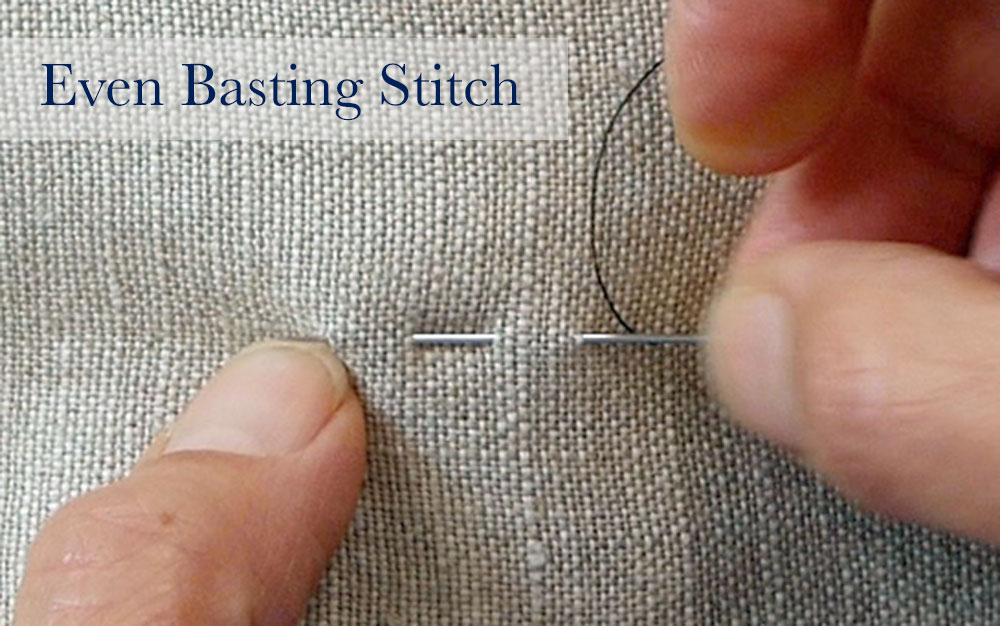
The Even Basting Stitch (official name) aka The Basting Stitch
This is the basting stitch you want to use for basting seams together to check the fit of a garment before sewing it with more permanent stitches.
The even basting stitch is very similar to the running stitch but the stitches are longer. Simply weave the needle in and out of your fabric at evenly spaced intervals (about 1/4″).
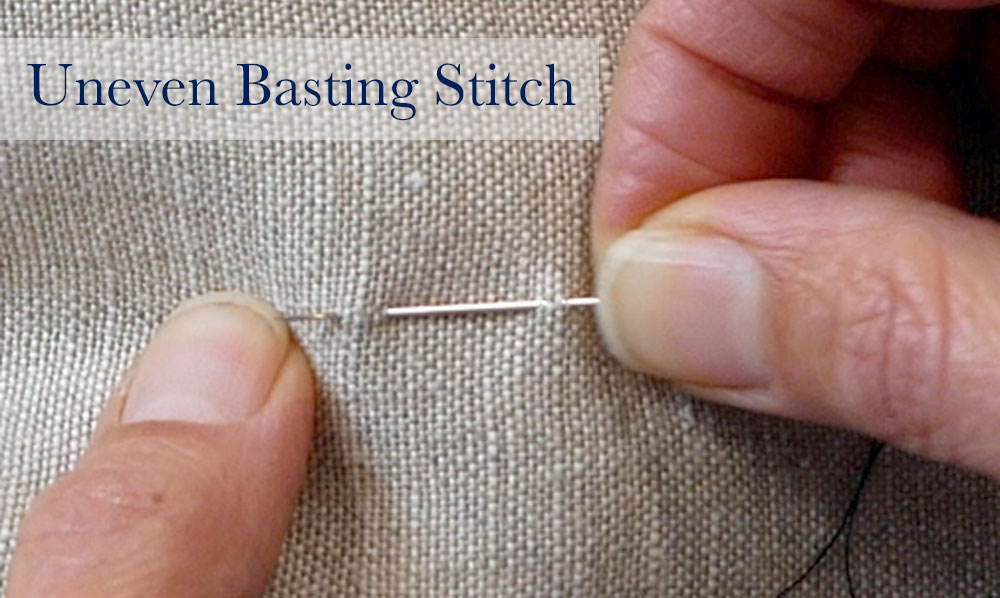
The Uneven Basting Stitch
The uneven basting stitch is used for holding underlining to the garment fabric. It’s also used to mark style lines in the garment.
It differs from the even basting stitch in that it is a short stitch across the back of the fabric and a long stitch across the front.
This stitch is best done on a hard flat surface. The needle can move along quickly in and out of the fabric without the layers shifting too much.
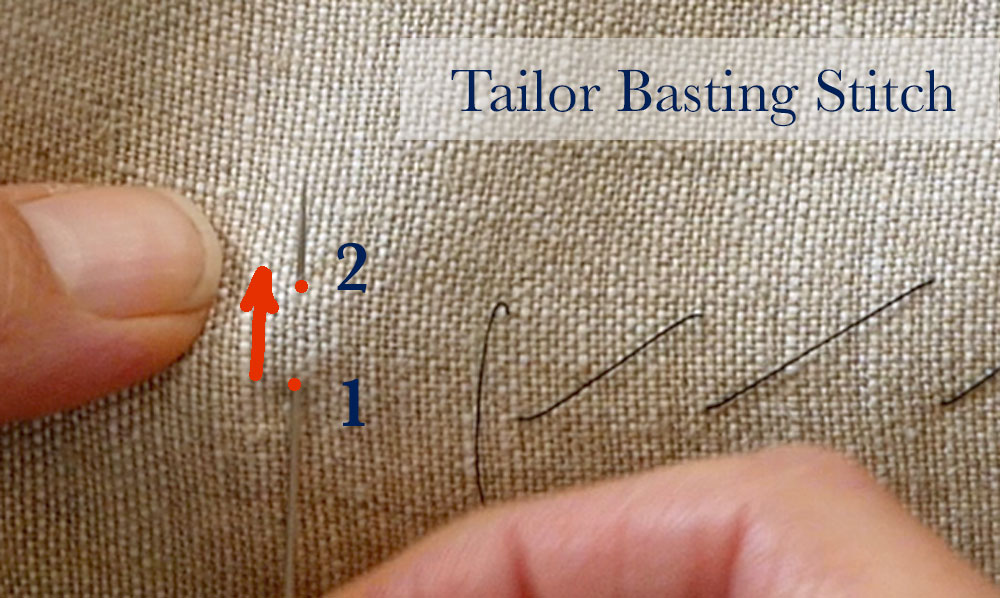
The Tailor Basting Stitch aka The Diagonal Basting Stitch
The tailor basting stitch is used by tailors to hold all the layers of a coat together (the fabric, the interfacing, the padding) for a fitting on a client. They use this stitch because it does such a great job of keeping all the layers in place and yet it’s easy to remove.
I use this basting stitch a lot when I need two layers to stay exactly where I placed them, for example when I’m sewing plaids and I don’t want the layers to shift at all under the presser foot when I sew them together.
Insert the needle down into the fabric (1) and come back up through the fabric about 3/8″ above the point the needle entered (2).
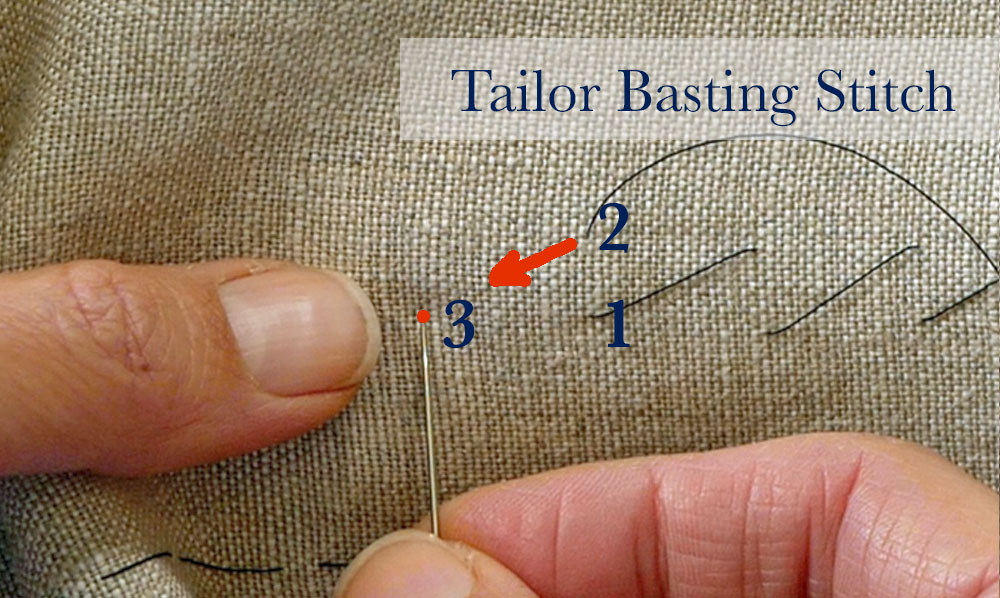
Insert the needle back into the fabric to the left (if right handed) and level to where it originally went in (3). This makes short vertical stitches across the back and longer diagonal stitches across the front.
If you have any questions about these stitches be sure to leave them in the comments.
Thanks.

I’m a complete newbie to sewing. Could you please have a tutorial on how to start a stitch and end it? Like, how do you attach the thread to the cloth at the beginning and how do you secure the thread when you finish? Currently, when I mend my clothes I don’t know how to do it properly so I kind of just do it randomly. Thanks a lot in advance!!! 😀
In an earlier post, “Sewing by Hand: The Basics” I show a good knot for the thread to begin and how to end your stitches. Plus, in that video is the back stitch which is great for mending. I hope that helps
i’m looking for tips on how to baste with more delicate fabrics such as silk, satin, etc. i am afraid of having a bunch of holes in my fabric from the basting and I want to make sure that doesn’t happen. do you use the smallest needle you have and do you still go through both layers or do you only catch a small thread on the delicate side? i am planning on attempting to create some quality made costuming with more traditional tailoring methods and was wondering what the best technique was. until now I have only ever made single layer garments and now I want to start creating something special for my wardrobe.
I just checked Caire Shaeffer’s “Fabric Sewing Guide” (the queen of fine sewing) and it says to use fine pleating pins when using silk. Test your pins on a piece of scrap. If they leave holes then you could use #10 needles in place of pins. I use Iris Super Fine pins (https://www.wawak.com/Cutting-Measuring/Pins/iris-20-super-fine-straight-pins-1-14/?sku=PI200) they’re made for fine fabrics.
If you can use size 10 needles for pining silk I imagine they’re good for sewing silk too 😉 They are small, fine needles.
For basting, she says “For most basting, use a soft cotton basting thread. To avoid thread imprints when you press the outside of the garment, baste with silk thread (size A)”
Wawak also carries cotton basting thread: https://www.wawak.com/Thread/Thread-By-Brand/WAWAK/cotton-basting-thread-40-tex-45/?sku=CBT1WH.
For silk thread buy a lighter weight, not silk buttonhole thread.
Have fun with your costume sewing. Thanks for the question.
What is extra firm basting stitches?
I have never heard that term. I looked through a few of my sewing reference books and couldn’t find any mention of Firm Basting. To me Extra Firm Basting sounds like basting with smaller/shorter stitches so whatever your basting (layers or a seam) really stays in place. Would that make sense in the context you saw it mentioned?
Thank you! So clear and informative!
Thanks!
Hey, umm, I don’t get tailor’s tacking. It is quite confusing
I got to agree with you. I usually skip it and just put pins in the garment to mark points. BUT, tailor tacks are traditional and what you’ll learn, or see referred to on occasion. I do use tailor tacks when working with tweeds or any other deeply textured cloth. You can’t mark heavily textured cloth very well, and not at all with chalk or fabric markers, so tailor tacks to the rescue in those instances.